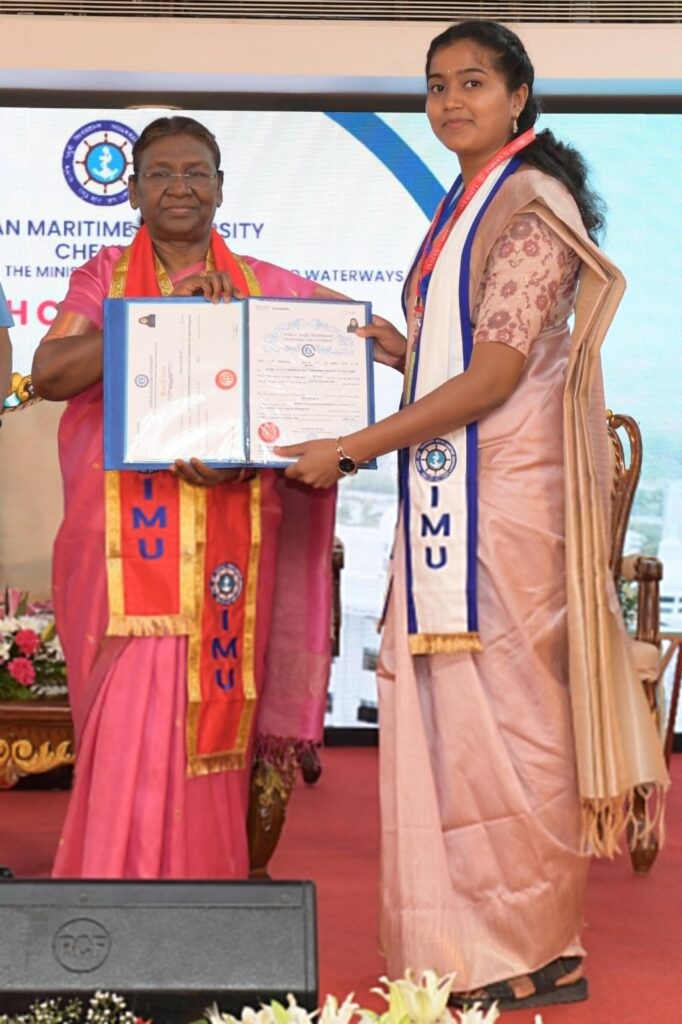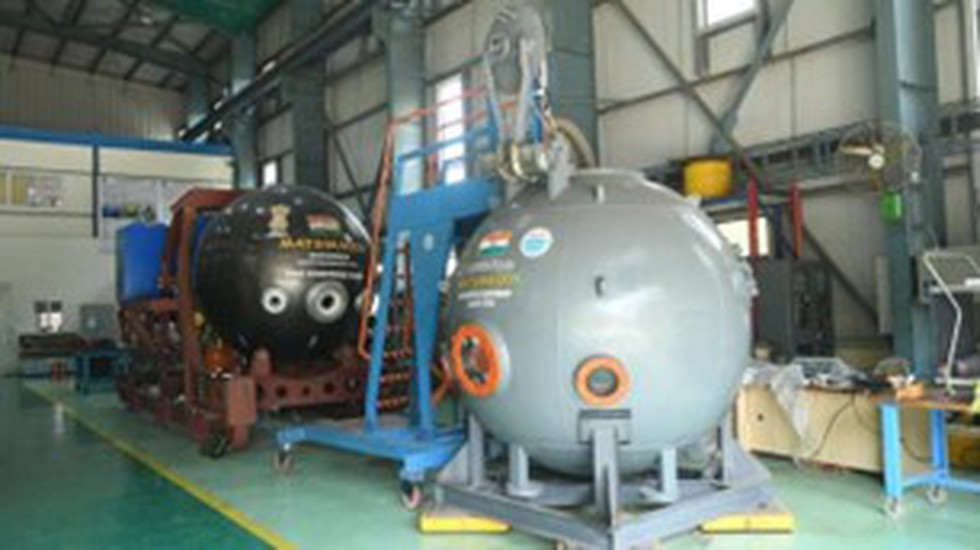Following the successful landing of Chandrayaan-3 on the Moon’s South Pole, India is now preparing for the Samudrayaan mission, a groundbreaking journey to explore 6,000-metre-deep ocean waters, President Droupadi Murmu said on Friday.
Addressing students, faculty and other guests at the 8th Convocation of the Indian Maritime University here, the President said some of the key objectives of the mission include an in-depth study of the deep-sea resources and their biodiversity assessment.
“One of the gravest challenges of our time is climate catastrophe which includes rising temperatures and sea levels. The maritime sector needs to be agile, proactive and swift in adaptation and mitigation of climate change which risks disrupting livelihoods, particularly among vulnerable communities,” she said.
“The maritime sector needs to be agile, proactive and swift in adaptation and mitigation of climate change which risks disrupting livelihoods, particularly among vulnerable communities.”
President Droupadi Murmu
Ruminating on the human relationship with oceans as one that has existed ever since our ancestors first laid eyes on water, the President recalled the rich maritime history of south India.

“The Pallavas of South India had a powerful navy. In the 10th and 11th centuries, Chola’s maritime prowess and skills were unmatched which spread our trade and traditions to distant lands. Tamil Nadu has been a land of sea farers. There are evidences of commercial and cultural contacts between South East Asia and South India. The Cholas, Cheras and Pandyas of Southern India had established maritime trade links with the local rulers of Sumatra, Java, Malay Peninsula, Thailand and China. The people of Odisha, then known as Kalinga also travelled through sea routes to South East Asia. The tradition of Bali Jatra is still popular in Odisha and it is held in October-November for about a week,” she said
India has a remarkable marine position with a 7,500 km long coastline and 1,382 offshore islands with at least 14,500 kilometres of potentially navigable waterways, apart from a strategic location on important maritime trade routes.
The country’s maritime sector plays a vital role in its trade and economic growth, as 95 percent of the country’s trade by volume and 65 percent of the trade by value is undertaken through maritime transport. The coastal economy sustains over 4 million fishermen and India is the second largest fish-producing nation in the world with a fleet of about 2,50,000 fishing boats, the President detailed in her speech.
What is the Samudrayaan Mission?
According to the ministry of Earth Sciences, the objective of the Samudrayaan Mission is to develop a self-propelled manned submersible to carry 3 human beings to a depth of 6000 meters in the ocean with a suite of scientific sensors and tools for deep ocean exploration. It is expected to have an endurance of 12 hours of operational period and 96 hours in case of emergency.
The manned submersible will allow scientific personnel to observe and understand unexplored deep-sea areas by direct interventions. Further, it will enhance the capability for deep sea man rated vehicle development. The projected timeline is five years for the period 2020-2021 to 2025-2026.
National Institute of Ocean Technology (NIOT), Chennai, an autonomous institute under MoES, has developed 6000m depth rated Remotely Operated Vehicle (ROV) and various other underwater instruments such as Autonomous Coring System (ACS), Autonomous Underwater Vehicle (AUV) and Deep-Sea Mining System (DSM) for the exploration of deep sea.
“The project will not disturb the ocean ecosystem. The Deep Ocean Mission supports the ‘Blue Economy’ vision of PM Narendra Modi and envisages sustainable utilization of ocean resources for economic growth of the country, improve livelihoods and jobs, and preserve ocean ecosystem health.”
Union minister Kiren Rijiju
In September this year, Union Minister Kiren Rijiju shared pictures and video of ‘Matsya 6000’ submersible which is a part of the Samudrayaan mission.
“The project will not disturb the ocean ecosystem. The Deep Ocean Mission supports the ‘Blue Economy’ vision of PM Narendra Modi and envisages sustainable utilization of ocean resources for economic growth of the country, improve livelihoods and jobs, and preserve ocean ecosystem health,” Rijiju said.
“Our scientists and researchers are fully devoted to make the Deep Ocean Mission very successful in a sustainable manner,” he added. According to the ministry of Earth Sciences, Samudrayaan mission is aimed at sending humans in a vehicle called ‘MATSYA 6000’ for the exploration of deep-sea resources like minerals. MATSYA-6000 is being designed and developed by NIOT.
Design of the vehicle has been completed and realization of various components of the vehicle is in progress. The Manned Submersible facilitates direct observation by humans deep in the ocean in exploring mineral resources rich in Nickel, Cobalt, Rare Earths, Manganese etc. and collection of samples, which can be used for analysis.
Apart from the scientific research and technological empowerment as the benefits, this mission has immediate spin-offs in the form of underwater engineering innovations in asset inspection, tourism and promotion of ocean literacy.
The development of 6000m-depth-rated Integrated Mining Machine and unmanned vehicles (tethered and automated) is expected to promote further exploration of deep-sea resources and biodiversity assessment.


